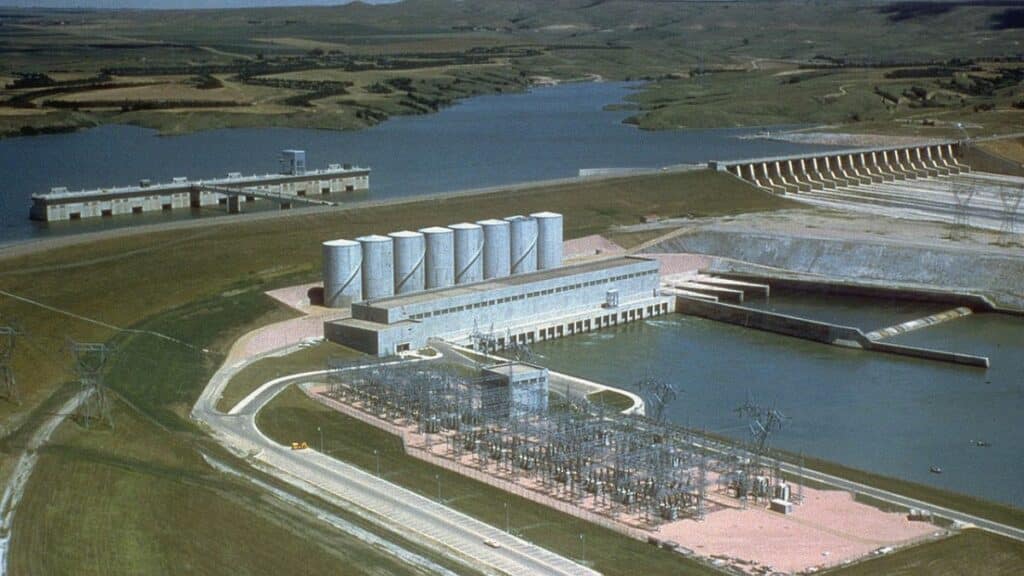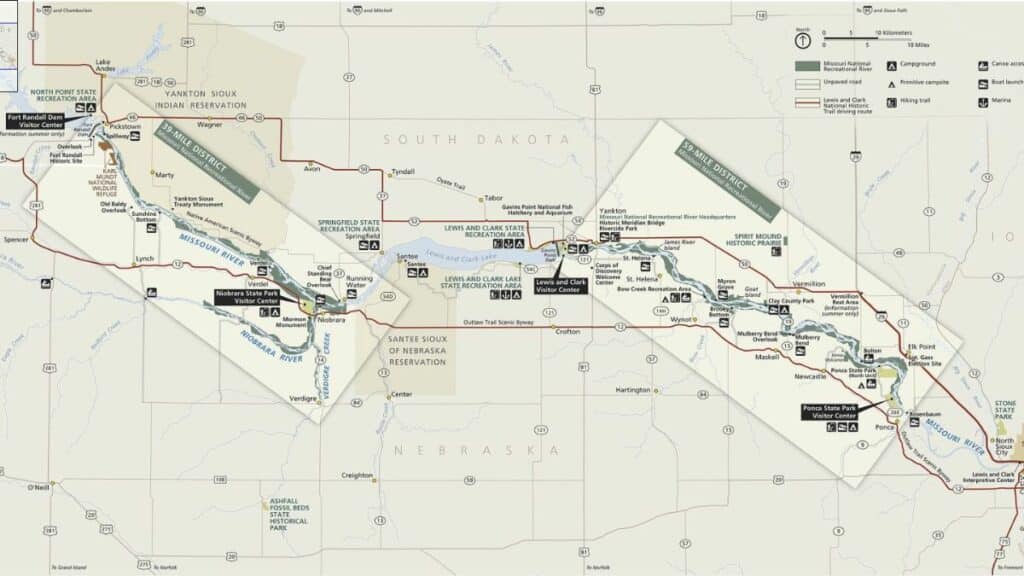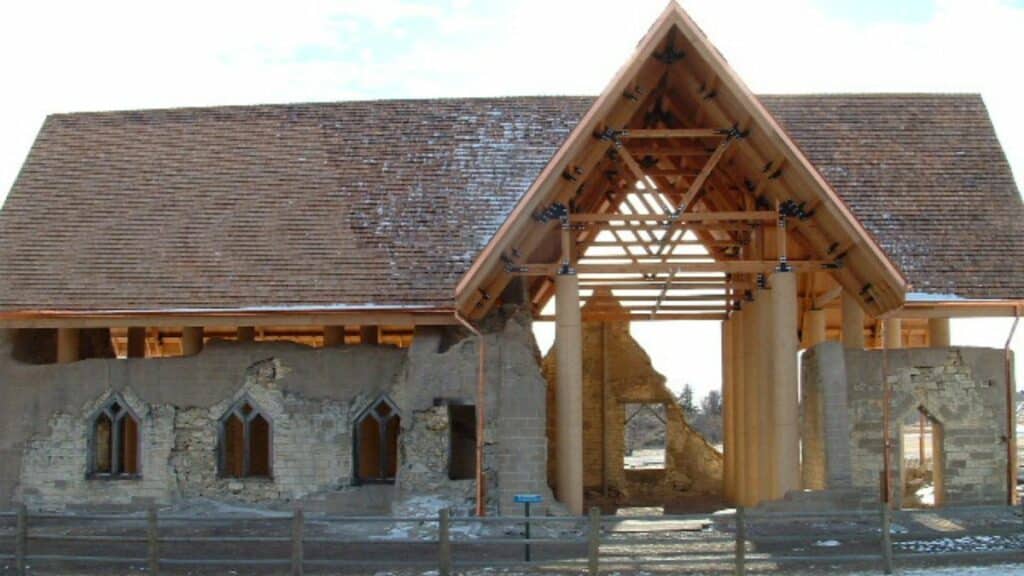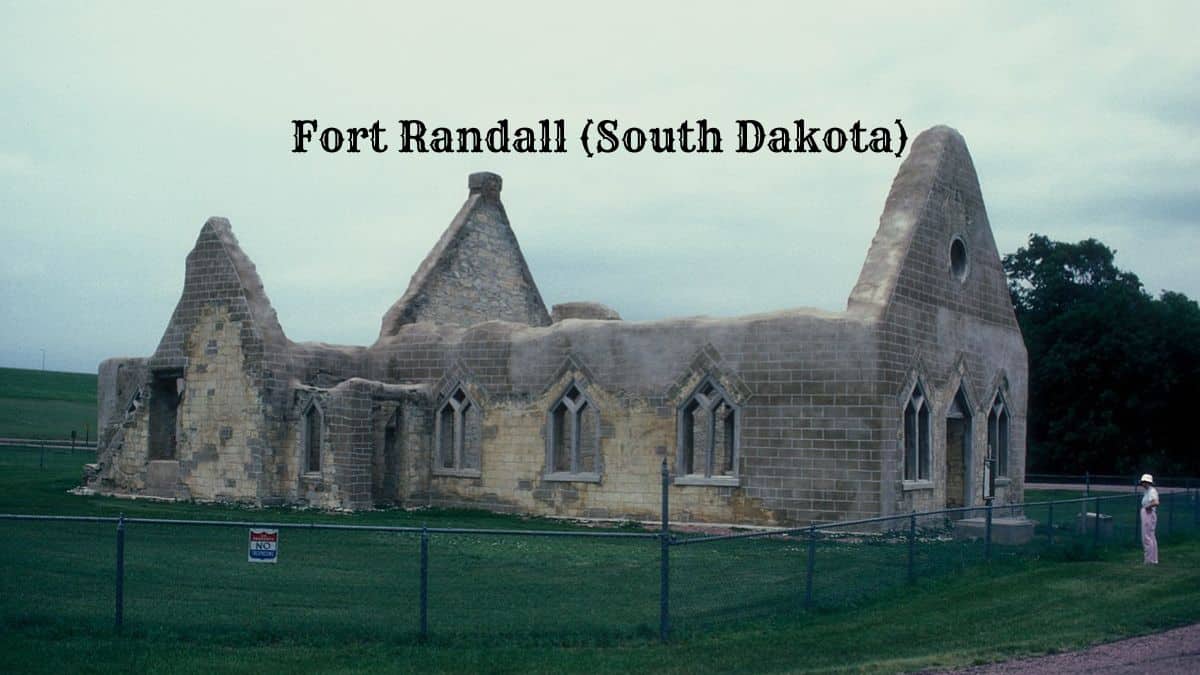Nestled along the Missouri River, Fort Randall in South Dakota is a captivating destination for history enthusiasts and nature lovers.
This historic site offers a glimpse into military history and the river’s natural beauty, making it a must-visit spot for anyone exploring the area.
The fort’s strategic location was crucial during its operation, providing defense and fostering relations with Native American tribes.
Today, visitors can explore the remnants of the fort, enjoy scenic river views, and engage in various recreational activities around the surrounding region.
Fort Randall offers a unique blend of history and natural allure, making it an exceptional destination to learn about South Dakota’s past while enjoying the great outdoors.
Its combination of historical intrigue and picturesque landscapes ensures a memorable experience for all who visit.
History of Fort Randall (South Dakota)

Located in South Dakota, Fort Randall played a significant role in the country’s military history, especially during the mid-19th century.
It was strategically important for interactions with Native American tribes and in managing regional conflicts.
A Pillar of Military Strategy and Frontier Order
Fort Randall was established in 1856 to provide military support and maintain order on the frontier. Its location near the Missouri River enabled control over crucial travel routes and trade paths.
General William S. Harney supervised early operations, focusing on establishing a presence and ensuring minimal conflict with local tribes.
The fort was used for various military campaigns, including those against the Teton Sioux.
Fort Randall served as a training and muster point for Union troops during the Civil War. After the war, it remained a key facility in federal efforts to manage relations with Native American tribes in the region.
Colonel Daniel Randall and the Sioux
Colonel Daniel Randall, named after the fort, was an important figure in its history. His role involved significant interactions with the Sioux tribes, particularly the Teton and Yankton Sioux.
As an officer in the U.S. Army, he focused on negotiating with the tribes to maintain peace.
Randall’s approach included maintaining open communication and attempting to understand Sioux culture.
His relations with leaders such as Sitting Bull were critical during heightened tension. Though not always successful, his efforts aimed to reduce conflict and foster mutual respect.
Colonel Randall’s impact remains a key aspect of the fort’s historical narrative, especially his attempts to bridge gaps between settlers and Native Americans.
Fort Randall Military Post
Fort Randall’s physical structure included barracks, officers’ quarters, and other essential facilities. It was built primarily of wood, reflecting the construction methods of the time.
By the late 19th century, the fort’s role evolved as military needs changed. It became less critical with new transportation routes and communication technologies.
Fort Randall was officially decommissioned in 1892. Today, its remnants offer valuable insights into mid-19th-century military life and frontier interactions.
Its site now attracts historians and tourists interested in this pivotal period of American history.
Fort Randall Dam and Reservoir

Fort Randall Dam, constructed by the U.S. Army Corps of Engineers, plays a crucial role in flood control, water supply, and irrigation. The dam’s Lake Francis Case supports navigation and recreation.
Dam Construction and Purpose
Fort Randall Dam was developed under the Pick-Sloan Plan for Missouri River Basin development. Construction began in 1946 and was completed in 1956.
The U.S. Army Corps of Engineers managed the extensive project, utilizing the contributions of thousands of workers.
Fort Randall Dam’s primary purpose is flood control, regulating water flow in the Missouri River. It also provides a water supply, benefits from irrigation, and improves navigation.
Alongside Big Bend Dam and Gavins Point Dam, it is integral in regional water management and resource distribution.
Lake Francis Case
Lake Francis Case, a reservoir formed by Fort Randall Dam, stretches over 100 miles. Named after Francis Higbee Case, a South Dakota Congressman, the lake covers areas significant for irrigation and recreation.
It supports local agriculture by offering a dependable water supply for irrigation.
The Lake Francis Case is vital for navigation, ensuring safe passage for vessels. It also attracts recreational activities like fishing, boating, and camping.
The lake’s importance to the environment and economy underscores Fort Randall Dam’s value in regional planning and development.
Natural Environment and Recreation

Fort Randall, South Dakota, offers an inviting blend of natural beauty and recreational opportunities. The area is marked by the scenic Missouri National Recreational River and numerous facilities that attract outdoor enthusiasts.
Missouri National Recreational River
The Missouri National Recreational River, managed by the National Park Service, stretches miles along the Great Plains. This river offers a habitat for diverse wildlife, including endangered species and migratory birds.
It’s a pristine area for boating, fishing, and kayaking, providing calm waters and challenging rapids.
The riverbanks feature lush forests and open meadows, making it a picturesque spot for nature walks. The nearby town of Pickstown often serves as a gateway for visitors, offering easy access to this natural treasure.
Recreational Activities and Facilities
Fort Randall and its surrounding areas are rich with activities that suit various interests.
Anglers can fish for bass, catfish, and walleye while hikers explore well-maintained trails.
Campgrounds with modern amenities like showers and picnic areas cater to families and solo adventurers alike.
The region also supports bird watching and hunting during appropriate seasons, making it a year-round destination for outdoor enthusiasts.
Various visitor centers provide maps, guides, and historical insights, ensuring a well-rounded experience for everyone.
Cultural Heritage

Fort Randall’s cultural heritage shines through its historic sites and preservation efforts. Key highlights include the historic chapel and the ruins of the original fort, each holding significant value.
Historic Chapel at Fort Randall
The historic chapel at Fort Randall is central to the site’s cultural identity. Built in the 19th century, it served the frontier community’s spiritual and social needs.
The chapel’s architecture reflects the period’s style and building techniques.
This well-preserved structure showcases stone masonry and wooden accents, symbolizing the dedication of early settlers.
The chapel, managed by the South Dakota State Historical Society, is more than a relic; it represents the resilience and faith of the soldiers and civilians who lived there.
Ruins of the Original Fort
The original fort’s ruins are foundational to understanding Fort Randall’s historical landscape. Constructed in 1856, the fort served as a military outpost during the Indian Wars.
Key structures included barracks, a guardhouse, and officer quarters.
Many of these buildings have deteriorated, leaving only footprints and partial walls.
Efforts to stabilize these ruins, led by the South Dakota State Historical Society, involve preserving what remains. The ruins evoke a sense of the past, offering tangible connections to the lives of soldiers and settlers of that era.
Explore More: 10 Historic Forts in South Dakota: A Comprehensive Guide
Community and Economy
Fort Randall, South Dakota, exhibits significant community development and economic growth influenced by vital structures and regions.
Pickstown and Its Development
Pickstown, located in Gregory County, is a central community near Fort Randall Dam. Established in the mid-20th century, It was originally built to house workers constructing the dam.
Today, it features essential amenities like schools, parks, and local businesses. U.S. Highway 281 runs through the area, connecting it to neighboring states like Nebraska and North Dakota and facilitating commerce and travel.
The population of Pickstown remains relatively stable, contributing to a close-knit community atmosphere.
Local events and recreational activities at Lake Francis Case, such as fishing and boating, attract residents and visitors.
Pickstown’s development is closely tied to its history and proximity to the dam, fostering a balanced blend of residential life and economic activity.
Economic Impact of the Dam
The construction and operation of Fort Randall Dam have significantly influenced the local economy.
Completed in 1956, the dam provides hydroelectric power and flood control, benefiting surrounding areas.
The dam generates employment opportunities, from maintenance to tourism, bolstering economic stability in the region.
Recreational activities at Lake Francis Case, created by the dam, enhance tourism.
Visitors engage in boating, fishing, and camping, supporting local businesses like eateries and lodging facilities.
Additionally, the power generated supplies energy to nearby states, bolstering regional energy resources.
The dam ensures long-term economic benefits by facilitating continuous employment and recreation-based income, making it a cornerstone of Fort Randall’s economy.
Fort Randall Visitor Information
Visitors to Fort Randall, South Dakota, can explore multiple attractions and resources that enhance their understanding of the area’s historical and natural significance.
Fort Randall Visitor Center
The Fort Randall Visitor Center is a key location for tourists to gather Information.
It provides exhibits on the history of Fort Randall and the surrounding areas, including detailed displays on the Lewis and Clark Expedition.
A highlight of the center is the Freshwater Aquarium, showcasing local aquatic life.
Interpretive programs and guided tours are available for both individuals and groups.
The center is open from 9 AM to 5 PM, seven days a week, and offers ample opportunities to learn about the region’s past and impact on the Missouri River ecosystem.
Tourism and Educational Resources
A variety of educational resources enriches tourism in Fort Randall.
Visitors who wish to explore independently can use self-guided tour booklets. Schools and educational groups frequently visit for hands-on learning experiences.
Informational pamphlets and maps assist tourists in navigating the site and nearby historic landmarks.
Workshops and lectures on regional history are periodically held. They cover the significance of St. Louis as a key trading post during the westward expansion.
Local hiking trails and picnic areas provide a chance to enjoy nature while learning about the historical significance of the sites.
Integrating natural beauty with educational content makes Fort Randall a meaningful destination.

Cory is a website owner and content creator who enjoys fishing, history, coin collecting, and sports, among other hobbies. He is a husband and father of four.
Romans 15:4 For whatever was written in former days was written for our instruction, that through endurance and through the encouragement of the Scriptures we might have hope.

